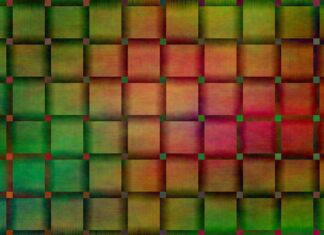Robotic Farming Swarms: Revolutionizing Agriculture Through Collaborative Automation
In recent years, the agriculture industry has witnessed a profound transformation driven by advancements in automation and robotics. Among these transformative developments, the concept of Robotic Farming Swarms has emerged as a revolutionary approach to agricultural practices. Combining the power of robotics, artificial intelligence (AI), and data-driven insights, these swarms represent a paradigm shift in how crops are cultivated, monitored, and harvested. This article delves into the concept of Robotic Farming Swarms, exploring their significance, functionalities, and potential implications for the future of food production.
Robotic Farming Swarms involve the coordinated operation of multiple robots or autonomous vehicles working together in a collaborative manner to carry out various agricultural tasks. This innovative approach aims to address several challenges faced by traditional farming methods, including labor shortages, resource inefficiencies, and the need for sustainable agricultural practices. By leveraging cutting-edge technologies, these swarms have the potential to enhance productivity, optimize resource usage, and reduce environmental impact, thus ushering in a new era of smart agriculture.
At the core of Robotic Farming Swarms lies the fusion of robotics and AI. Each robot within the swarm is equipped with sensors, cameras, and data-processing capabilities, enabling them to perceive and analyze their surroundings. AI algorithms empower these robots to make real-time decisions based on the collected data, allowing them to adapt to changing conditions and execute tasks with precision. This level of autonomy not only streamlines the farming process but also minimizes the need for human intervention, particularly in labor-intensive activities.
The concept of robotic swarms draws inspiration from the collective behavior observed in nature, such as the coordinated movements of insects like bees and ants. By mimicking these patterns of cooperation and communication, Robotic Farming Swarms can achieve a high degree of efficiency and effectiveness. The individual robots collaborate seamlessly, sharing information and insights to accomplish tasks that would be challenging for a single robot or human to perform alone. This collective intelligence sets the stage for increased agricultural output while optimizing the use of resources such as water, fertilizers, and pesticides.
One of the key advantages of Robotic Farming Swarms is their versatility across various agricultural operations. From planting and monitoring to irrigation and harvesting, these swarms can cover a wide spectrum of tasks throughout the crop lifecycle. During the planting phase, the robots can navigate the field autonomously, planting seeds at optimal depths and intervals. Subsequently, they can continuously monitor the crops by assessing factors such as growth rate, pest infestations, and soil conditions. This real-time data collection allows for early detection of issues, enabling timely interventions to ensure healthier yields.
Irrigation, a critical component of agriculture, can also benefit from robotic swarms. By integrating moisture sensors and weather data, the robots can accurately determine when and where irrigation is needed, preventing over-watering and conserving water resources. Furthermore, as the crops near maturity, the swarms can orchestrate the harvesting process. Equipped with tools like robotic arms and grippers, these robots can selectively harvest ripe crops with precision, reducing waste and optimizing yield.
The advantages of Robotic Farming Swarms extend beyond operational efficiency. One of the pressing challenges in agriculture is the excessive use of agrochemicals, including pesticides and fertilizers, which can have detrimental effects on the environment and human health. Robotic swarms can address this challenge by enabling targeted application of these substances. Through data analysis and AI-driven insights, the robots can identify specific areas within the field that require treatment, minimizing the overall use of chemicals and mitigating their negative impact.
In addition to their practical benefits, Robotic Farming Swarms contribute to the larger goal of achieving sustainable agriculture. These swarms can be integrated with precision farming techniques, which involve tailoring farming practices to the unique characteristics of different areas within a field. By optimizing the allocation of resources based on site-specific conditions, the swarms can reduce waste and enhance overall efficiency. This, in turn, supports soil health, reduces the carbon footprint, and promotes responsible land management.
As the concept of Robotic Farming Swarms gains momentum, researchers and engineers are confronted with various challenges that must be addressed for widespread adoption. One of these challenges is the development of robust communication and coordination protocols among the robots. Efficient sharing of data and synchronization of actions are essential for achieving seamless collaboration within the swarm. Additionally, ensuring the security of the data being transmitted and processed by these robots is of paramount importance to prevent potential cyber threats.
The physical design of the robots also plays a critical role in their effectiveness. They need to be equipped with reliable and adaptable hardware that can navigate diverse terrains, withstand harsh weather conditions, and perform delicate tasks with precision. Battery life and energy efficiency are other crucial aspects that demand attention, as longer operational periods between recharges or battery swaps are vital for maximizing productivity.
Ethical and social considerations are integral to the integration of Robotic Farming Swarms into agriculture. While automation has the potential to alleviate labor shortages, it could also disrupt rural communities that rely on agricultural employment. Finding ways to transition and upskill the workforce will be essential to ensure a just transition. Additionally, access to this advanced technology should be equitable, enabling both small-scale and large-scale farmers to benefit from its advantages.
In conclusion, Robotic Farming Swarms represent a transformative leap in agricultural practices. By harnessing the power of robotics, AI, and collective intelligence, these swarms offer the potential to revolutionize food production. Their ability to autonomously execute tasks ranging from planting to harvesting, while optimizing resource usage and reducing environmental impact, holds promise for a more sustainable and efficient future of agriculture. As research and development in this field continue, addressing technical, ethical, and social challenges will be key to unlocking the full potential of Robotic Farming Swarms and ensuring that the benefits are realized across the agricultural landscape.
In the modern era, the fusion of technology and agriculture has given rise to innovative approaches that challenge traditional farming practices. Among these, Robotic Farming Swarms stand out as a groundbreaking concept poised to reshape the landscape of agriculture as we know it. The marriage of robotics and farming is not a new idea, but the idea of swarms takes it to a whole new level of sophistication and potential.
At its heart, Robotic Farming Swarms offer a glimpse into the future of food production, where fields are tended to not by a fleet of human laborers, but by a coordinated fleet of intelligent robots. This vision might conjure images of science fiction, but the reality is that technology has brought us to the brink of realizing such dreams. Picture a field buzzing with activity, not of people stooping to plant seeds, but of small robots traversing the earth with precision and purpose. These robots, equipped with an array of sensors and cameras, interact with the environment in ways that mimic the natural behavior of insects, like ants collaborating to build a colony or bees working together in a hive.
The concept of swarming is deeply rooted in nature, and scientists and engineers have drawn inspiration from these natural phenomena to develop systems that can perform complex tasks through collective intelligence. While each individual robot possesses a degree of autonomy, it is the interaction between these robots that creates a sophisticated network capable of addressing a multitude of challenges.
Consider the planting phase, where a conventional farmer would need to laboriously plant each seed in the ground. In the realm of Robotic Farming Swarms, this process takes on a whole new form. The robots, guided by AI algorithms, move across the field in a coordinated manner, distributing seeds at optimal depths and intervals. This not only speeds up the planting process but also ensures a uniform distribution of seeds, leading to more consistent crop growth.
As the crops begin to sprout, the robots continue to play a crucial role. Their sensors and cameras enable them to monitor plant health, soil conditions, and potential pest infestations. This constant stream of data feeds into the AI algorithms, which can then identify patterns and anomalies that might escape the human eye. By catching these issues early, the robots facilitate timely interventions, which can range from targeted pesticide application to adjusting irrigation levels. The result is not just higher yields but also a reduction in the need for excessive chemical usage, thereby contributing to more sustainable farming practices.
The idea of robots working in tandem might raise concerns about coordination and communication. After all, how can a swarm of robots navigate a complex environment without collisions or chaos? This is where the magic of technology comes into play. Through a combination of advanced sensors, real-time data processing, and sophisticated algorithms, these robots are capable of detecting and avoiding obstacles. They can communicate with each other, sharing information about their movements and the obstacles they encounter. This collaborative effort ensures that the robots move with a grace and efficiency that mimics the coordinated dance of a flock of birds.
But the potential of Robotic Farming Swarms goes beyond the field itself. They have the potential to revolutionize the very way we think about land use and resource allocation. With their ability to target specific areas for interventions, these robots can optimize the use of water and fertilizers. No longer will vast amounts of these resources be applied uniformly across a field; instead, they will be applied precisely where and when they are needed, minimizing waste and environmental impact.
The application of Robotic Farming Swarms is not limited to large, commercial farms. Small-scale and subsistence farmers stand to benefit as well. These robots can level the playing field, providing access to cutting-edge technology that might have been out of reach before. This inclusivity could potentially transform agriculture in developing regions, where innovative solutions are sorely needed to address food security challenges.
However, as with any technological advancement, there are ethical and social considerations that must be taken into account. While the prospect of automated farming is exciting, it also raises questions about the future of agricultural employment. What happens to the farmers who have relied on their land for generations? As we usher in a new era of farming, we must ensure that these transitions are just and equitable, providing avenues for upskilling and alternative livelihoods.
In the grand tapestry of technological progress, Robotic Farming Swarms represent a vibrant thread that promises to weave together efficiency, sustainability, and innovation. As we contemplate a world where fields are tended to by intelligent robots, we must also embrace the responsibility that comes with shaping such a future. The challenges are not insignificant, but the potential rewards – in terms of increased food production, resource conservation, and environmental stewardship – make the journey a worthy one. Just as the swarming behavior of insects has stood the test of time, these robotic swarms might just hold the key to unlocking a brighter and more bountiful future for agriculture.






















